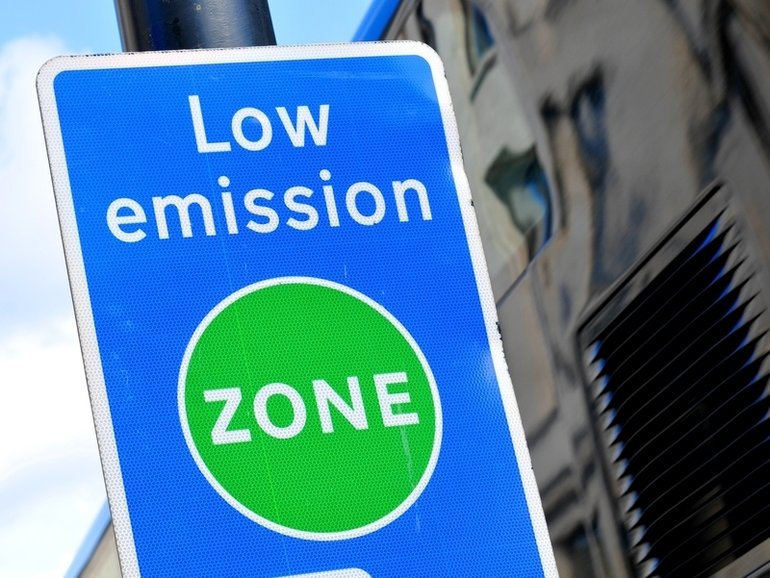BREAKING: Bucharest moves to ban most polluting vehicles

By Bucharest Team
- NEWS
- 11 JUL 25
Bucharest City Hall is preparing to design, promote, and implement a low emission zone (LEZ) covering the entire metropolitan area over the next two years, according to a draft plan currently under review and obtained by Profit.ro.
The LEZ will gradually restrict access for the most polluting vehicles, following a phased timeline based on fuel type (diesel, petrol) and vehicle age. Under the plan, older diesel vehicles will face the strictest and fastest-imposed limitations.
As previously reported by Profit.ro, in 2023, Parliament passed a law requiring Bucharest and 12 other major cities—including Brașov, Cluj-Napoca, Constanța, Craiova, Iași, Ploiești, and Timișoara—to establish low emission zones within two years. These zones are intended to enforce restrictions and/or charges on vehicle access.
A year ago, the Ministry of Development, led at the time by liberal politician Adrian Veștea, drafted the legislation to implement LEZs in large cities. However, Prime Minister Marcel Ciolacu opposed moving the plan forward in Government, citing lack of public consultation and absence of consensus within the ruling coalition.
The new plan, developed by Bucharest City Hall in partnership with the European Bank for Reconstruction and Development (EBRD), carries an estimated cost of €15 million, funded through the National Recovery and Resilience Plan (PNRR) and an InvestEU loan.
Implementation stages
- Defining the Zone and Vehicle Classification
The LEZ boundaries will be defined, and vehicles classified based on emission standards—most likely using the Euro norms. Restrictions on high-emission vehicles will increase progressively. - Modernizing Air Quality Monitoring
The city’s air quality monitoring network will be upgraded to better reflect traffic-related pollution. Passive NO₂ samplers will be deployed to assess whether additional measures are needed in certain areas. Mobile air quality labs will also monitor hotspots and high-traffic zones, while live data will be made publicly accessible. - Installing Enforcement Systems
Automatic license plate recognition (ALPR) cameras will be placed at LEZ entry points to identify non-compliant vehicles. A fine system will be put in place, with revenues allocated to a Clean Mobility Fund. - Public Awareness Campaign
A communication campaign will inform residents about the LEZ, how to comply, and its health and environmental benefits. Collected fines will be reinvested in transport solutions for vulnerable communities. - Ongoing Monitoring and Evaluation
Continuous monitoring of traffic and air quality data will inform adjustments to the zone’s size and restrictions. Annual reports will ensure transparency and help maintain public support.
Emission reduction targets
The phased implementation of the LEZ is aimed at curbing the use of high-emission vehicles in a city where the car fleet is aging—averaging 12.4 years—and where diesel vehicles account for 43.5% of all cars.
Operating year-round, the LEZ initially targets a 10% reduction in high-emission vehicles, translating into an estimated annual savings of 21,900 tCO₂e. Mid-term targets raise this figure to 20% (43,800 tCO₂e/year), while long-term plans aim for a 30% cut, saving approximately 65,700 tCO₂e annually.
Cleaner air in LEZ areas is expected to reduce healthcare costs by €1.3–3.9 million per year, primarily through fewer respiratory and cardiovascular illnesses. These savings are based on reductions of PM2.5 and NOx emissions, using estimated values of €30,000–80,000 per ton of PM2.5 and €10,000–30,000 per ton of NOx avoided. Average emissions per older diesel vehicle (EURO 3 and 4 standards) are estimated at 0.005 tons of PM2.5 and 0.02 tons of NOx annually.
Project timeline
- Zone design and standard-setting: 6–9 months
- Air quality monitoring system installation: 6 months (in parallel)
- ALPR camera installation and enforcement systems: 12–18 months
The rollout will be supported by traffic cameras, road signage, and a dedicated awareness campaign to highlight the benefits of cleaner air. Fines imposed on non-compliant vehicles will fund efforts to reduce transport poverty and support sustainable mobility.
City Hall emphasizes that the success of the LEZ depends heavily on a robust air quality monitoring system, expanded station networks, and targeted action plans for pollution hotspots. Public access to real-time air quality data is considered vital for public acceptance.
The plan’s impact will be further enhanced through complementary measures, including improved public transport, pedestrian zones, and expanded cycling infrastructure.


























